Prescription painkillers like OxyContin, Vicodin, Opana, fentanyl, and Percocet were all created to serve an invaluable purpose. These medications, which can only be prescribed by a licensed physician, are meant to alleviate pain and improve the quality of life for those struggling with discomfort following surgery, an injury, or pain caused by a medical problem.
Understanding Painkiller Abuse
Learn More About Painkiller Addiction
However, because these substances can also bring on intense feelings of euphoria and an inability to experience physical pain, many men and women misuse them and become trapped in the vicious cycle of painkiller abuse.
Similar to the addictive nature that heroin has, painkillers, which are classified as opioids, can be the source of a seemingly inescapable addiction. Once a person’s body has become tolerant and dependent on these sort of drugs, defeating this form of chemical dependence without the help and guidance of trained professionals can be a futile experience that leaves a person embattled with an overwhelming compulsion and desire to abuse painkillers over and over again. However, if you’re someone who is addicted to prescription painkillers, yet is seriously considering treatment at this juncture in your life, it’s pivotal to know that things can get better and that help is available. When you make the brave decision to start treatment, you are choosing your health and happiness over your drug of choice and you’re making way for a bright and successful future. Therefore, don’t mull over this important decision any longer. Call a treatment center, complete an assessment for services, and being living a painkiller-free life today.
Statistics
Statistics of Painkiller Addiction
Every day, over 40 people lose their lives as a result of abusing prescription painkillers in the United States. This shocking statistic was reported by the Centers for Disease Control and Prevention, or CDC, and is but one alarming fact about the dangers of prescription painkiller abuse. In 2013, it was also reported that over 16,000 people experienced an overdose after misusing prescription pain relievers, and, sadly, this number has been climbing. The NIDA, or the National Institute on Drug Abuse, reports that well over fifty million American men and women have abused painkillers for the purposes of getting high, which is likely contributing to the ever-present opioid epidemic that’s taken hold of the country. Considering these startling statistics, it’s imperative that more is done to alert the public about the dangers of painkiller abuse.
Causes
Causes and Risk Factors for Painkiller Abuse
Researchers have tried to uncover the reasons why some people become addicted to prescription painkillers while other don’t. The following are the results of this research and may help you understand what led you to abuse and become addicted to these medications:
Genetic: While you make the conscious choice to abuse prescription painkillers, your genes may have something to do with whether or not you become addicted to these sort of drugs. Researchers have identified certain clusters of genes that can make someone, perhaps you, more vulnerable to grappling with substance abuse and addiction. Therefore, you may want to look into your own family history to see if this has been a concern for others that you’re related to.
Environmental: Your environment can have a powerful influence over whether or not you misuse prescription painkillers. For example, if you socialize with individuals who abuse painkillers, you may be more compelled to engage in the same behavior. Additionally, if you are able to easily get these sort of substances, whether from your own doctor or by taking someone else’s medication, you may be tempted to partake in the abuse of these drugs as well. Lastly, having a history of substance abuse, trauma, or exposure to chaos and crime can all affect your choice to abuse painkillers, which can be even more influenced if you lack coping skills and adequate support from people that you are close to.
Risk Factors:
- Experiencing severe acute or chronic pain
- Prior substance abuse
- Personal history of mental illness
- Family history of mental illness
- Family history of substance abuse and addiction
- Ease of access to prescription pain medications
- Lacking healthy coping skills
- Prior history of trauma
Signs
Signs and Symptoms of Painkiller Abuse
Depending on the type of painkiller that you’re abusing, the amount of the drug that you take, and the length of time that you’ve misused your painkiller of choice, the signs and symptoms of painkiller abuse can vary. However, if any of the following are affecting your life, you should consider getting treatment at this time:
Behavioral symptoms:
- Diminished participation in once enjoyed activities
- Slurring speech
- Deception regarding whereabouts and/or activities
- Using painkillers when its clearly dangerous to do so
- Visiting multiple doctors to get prescriptions for painkillers
- Stealing medication that has been prescribed to someone else
- Continuing to abuse painkillers despite consequences of doing so
- Trying but being unable to stop the abuse of painkillers
- Spending a great deal of time getting, using, and recovering from painkiller abuse
- Social withdrawal and isolation
Physical symptoms:
- Itchiness
- Pupil dilation
- Impaired coordination
- Heavy perspiration
- Disrupted sleep patterns
- Decreased blood pressure
- Constipation
Cognitive symptoms:
- Confusion
- Disorientation
- Poor decision-making skills
Psychosocial symptoms:
- Depression
- Drastic changes in mood
- Irritability
Effects
Effects of Painkiller Abuse
It’s crucial for you to know that you don’t have to remain addicted to prescription painkillers and endure the adverse effects that come with this type of chemical dependency problem. Furthermore, when you get professional help, you can prevent the following from happening to you and live the sober life you deserve:
- Legal problems
- Homelessness
- Job loss
- Chronic unemployment
- Suicide attempt or attempts
- Onset of mental health concerns
- Financial distress
- Family discord
- Social isolation
- Development of physical health problems
- Suicidal ideation
- Damaged interpersonal relationships
Co-Occurring Disorders
Learn About Co-Occurring Disorders
Some individuals don’t know that they’re struggling with an undiagnosed mental health disorder at the same time as a painkiller addiction. Because of this, you should pick an addiction treatment center that assesses for and treats co-occurring disorders like the following:
- Major depressive disorder
- Persistent depressive disorder
- Posttraumatic stress disorder (PTSD)
- Other substance use disorders
Effects of Withdrawal and Overdose
Effects of Withdrawal and Overdose for Painkiller Abuse
Effects of prescription painkiller withdrawal: Successfully getting through withdrawal can set the stage for a long-lasting recovery. Therefore, if you’re tired of enduring the following symptoms and effects of withdrawal and returning to the abuse of prescription painkillers, it’s best to begin the treatment process as soon as you’re able:
- Powerful cravings for painkillers
- Irritability
- Agitation
- Heavy perspiration
- Watery eyes
- Nausea
- Vomiting
- Fever
- Loss of appetite
- Runny nose
- Pain in bones
- Muscle pain
- Tremors and twitches
- Inability to sleep
- Dysphoria
- Diarrhea
Effects of prescription painkiller overdose: Emergency medical help is almost always needed if you experience a prescription painkiller overdose. Given this fact, you or someone around you should call 9-1-1 if any of the following begins happening to you after abusing a prescription painkiller(s):
- Breathing problems
- Loss of consciousness
- Slow pulse
- Pinpoint pupils
- Extreme disorientation
- Seizure










